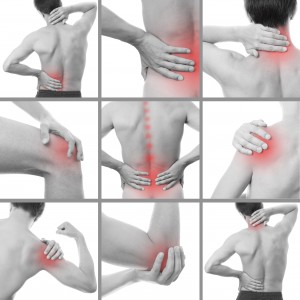
This primary research piece seeks to understand the experiences of caregivers in responding to pain in people they support with a learning disability.
Caregivers are identified as both parents of a person living at home or paid support workers in a supported setting. The specified objectives were to investigate:
- How caregivers respond to possible pain
- If and how they recognise pain
- What emotional impact these processes have on caregivers.
The research seeks to detail caregivers’ perspectives on the practice of that role which, additionally, provides us with insights into their performance in identifying and effectively supporting the management of pain.
Methods
Eleven caregivers were interviewed for the research and the results analysed using Interpretative Phenomenological Analysis. This approach seeks to understand how individuals make sense of an experience, in this case, how they deal with the person they support experiencing, or possibly experiencing, pain. The approach involves a process of clustering statements from the interviews to draw out themes. In this case the superordinate themes were:
- Suffering in silence
- Searching for meaning to explain the complaint
- Knowledge and skills needed to recognise and manage pain
- Perceptions of the pain experience
- Acting to try and reduce pain
- The emotional impact of pain
Each superordinate theme has a number of subordinate themes beneath it and the tabulated results illustrate how many of the interviewees endorsed each subordinate theme.
Results
Nine caregivers reported incidents where they found later on that the person they were supporting must have been in pain but that they had not recognised it at the time. The same number reported a view that people with a learning disability often did not complain of being in pain. Three caregivers suggested that they believed that the person they supported my deliberately hide the pain from the caregiver.
There are seven themes which illustrate the process which exists between the person and the caregiver of trying to understand pain. These included verbal notification, gestures and pointing and behaving in challenging ways. The caregivers described themselves asking the person about pain, or looking for other known signs such as behaviour mood or body posture.
Six Caregivers described themselves as ‘detectives’ working via guesswork and a specific knowledge of a person’s pain expressions, which were highly individual.
Formal caregivers felt sharing of knowledge and a consistent staff team was helpful in developing caregivers’ skills in recognising and managing pain.
Training was also highlighted as a possible support but this appears largely to have not happened. There were mixed levels of confidence about the ability to recognise pain amongst the caregivers but we are not given information about why.
Somewhat worryingly, three formal caregivers reported the need for them to try to work out what was genuine pain as opposed to that which was exaggerated or made up for another purpose, for example avoiding an activity or gaining attention.
There was a general sense from the caregivers that they believed that the people they were supporting seemed able to tolerate more pain and have higher pain thresholds than the general population. Views about why this may be, varied. Some questioned whether people with a learning disability understood pain, the cause of pain and pain relief.
All of the participants in the study involved health professionals if they believed the person they supported was in pain. They also acted as a mediator with those professionals to try and obtain treatment.
The majority described a dissatisfaction with these interactions and the work of the health professionals. These were based on: poor communication with people with a learning disability, not asking about pain and not looking at the person holistically.
All of the participants described seeking and testing pain relief options including pain relief, alternative therapies and other strategies such as use of hot water bottles. Three reported offering reassurance and emotional support as part of their role.
Unsurprisingly, ten of the participants reported having emotional responses to the experience of supporting someone in pain. The emotions ranged from worry, sympathy to being “really, really down”. The remaining two participants saw this experience as simply part of the job role and stated they were unaffected emotionally.
The overview of the results paints a bleak picture of how effectively people with a learning disability are supported to gain access to appropriate treatments for pain, whether they be administered at home in the form of over the counter pain killers and alternative therapies or when professional health care is sought.
This research supports a theory that pain is often not recognized in this group.

Results paint a bleak picture of how effectively people with a learning disability are supported to gain access to appropriate treatments for pain
Conclusion
Clearly, there are some obvious barriers which prevent well-intentioned caregivers and professionals from successful diagnosis, but the research shows very varied approaches which sits poor practice, lack of skills and unhelpful attitudes alongside dedication, heightened awareness of individual communication and emotional involvement.
Strengths and Weaknesses
The key value of this research is in highlighting the complexity and difficulties faced by caregivers in providing effective support to people who are, or may be, in pain. The training and skills shortfalls as well as some of the prevailing attitudes indicate that this is an area that may well not have the appropriate level of focus, particularly amongst formal care providers.
An obvious concern for the validity of results would be the very small sample size for the interviews and a lack of clarity about how the respondents were selected. We are informed they are volunteers but not how they were recruited. A wide range of potential biases is identified in the limitations section of the document.
The lack of differentiation between various groups in the research presents the reader challenges in contextualising the results. For example, in the findings, we are largely not informed which of the respondents were family or paid caregivers. This may have enabled us to see, for example, different approaches or levels of effort applied to understanding whether the person was in pain between those two groups.
An even more valuable differentiation would have been in the levels of need in the people being supported. It would be very useful to see if the level of challenge faced by the caregivers was relative to the needs and abilities of the supported person. The results are not differentiated for us in a helpful way on this key characteristic. It would have been very useful to complete the research across, for example, three levels of communication technique. Those who communicate verbally, those whose primary communication is through sign and gesture and those who use other forms. This would have enabled us to have evidence directing us where to focus any additional resource.
Summary
This research highlights significant shortfalls in existing skills and knowledge amongst caregivers, in particular, being able to identify when a person is in pain and the steps they should/could take. It provides a useful insight into an under reviewed area of support provision.
Providers can take some key direction from the work including:
- The value of consistent records and communications about a person’s indicators of pain
- likewise the assessed effectiveness of pain treatments
- The role of hospital passports in ensuring health professionals are aware of peoples unique communication of pain
- Training should be considered where pain is known (e.g. existing conditions) or where communication of pain would rely on observation of micro communication.
- The need to challenge common assumptions that people with a learning disability have higher thresholds of pain and/or the potentially dangerous suppositions of exaggerating or faking pain.
The study emphasises the lack of skills, awareness and training of health professionals to be able to provide effective support to people with a learning disability. This finding adds to the body of work on the problem of health inequalities for this group.
Further research focusing on those with profound needs and the particular challenges that identifying pain and effective treatment may present to that group seems an obvious next step.

Findings emphasise need to challenge common assumptions that people with a learning disability have higher thresholds of pain
Links
Primary paper
Findlay, L., Williams, A. C. d. C., Baum, S. and Scior, K. (2015), Caregiver Experiences of Supporting Adults with Intellectual Disabilities in Pain. Journal of Applied Research in Intellectual Disabilities, 28: 111–120 [abstract]


A study highlights the need to challenge common assumptions that people with LD have higher thresholds of pain http://t.co/zkYmieReNv
Understanding and responding to pain in people with learning disabilities https://t.co/c4uSoXKcCR via @sharethis http://t.co/KOheFOurrK
Don’t miss: Understanding and responding to pain in people with learning disabilities http://t.co/zkYmieReNv #EBP
Understanding and responding to pain in people with learning disabilities https://t.co/7whyQFz4iX
Understanding and responding to pain in people with learning disabilities https://t.co/Z4wUCm7qZr via @sharethis #learningdisabilities
RT @Mark_Sheldon: Understanding and responding to pain in people with learning disabilities http://t.co/TOYTrZZZhp via @LearningDisElf http…
Understanding and responding to pain in people with learning disabilities https://t.co/aLORAZHot4 via @sharethis
Understanding and responding to pain in people with learning disabilities https://t.co/V5p5UC2ZCf via @sharethis
Understanding and responding to pain in people with learning disabilities https://t.co/2Zj1QjaU8a via carevine
Understanding and responding to pain in people with learning disabilities https://t.co/ivKR3PnFVV via @sharethis
Hi Nick, thank you for your research article. I hope it’s okay, I wanted to add some links to help care givers identify and quantify pain:
Disability Distress Assessment Tool (DisDAT)
http://www.stoswaldsuk.org/how-we-help/we-educate/resources/disdat.aspx
Pain in children with severe intellectual disability: A Guide for Parents
http://w3.cerebra.org.uk/research/guides-for-parents/pain-in-children-with-severe-intellectual-disability-a-guide-for-parents/
The FLACC Pain Scale
http://wps.prenhall.com/wps/media/objects/3103/3178396/tools/flacc.pdf
More links here:
http://yvonnenewbold.com/recognising-pain-in-the-non-verbal-child/
Best Regards, Ian